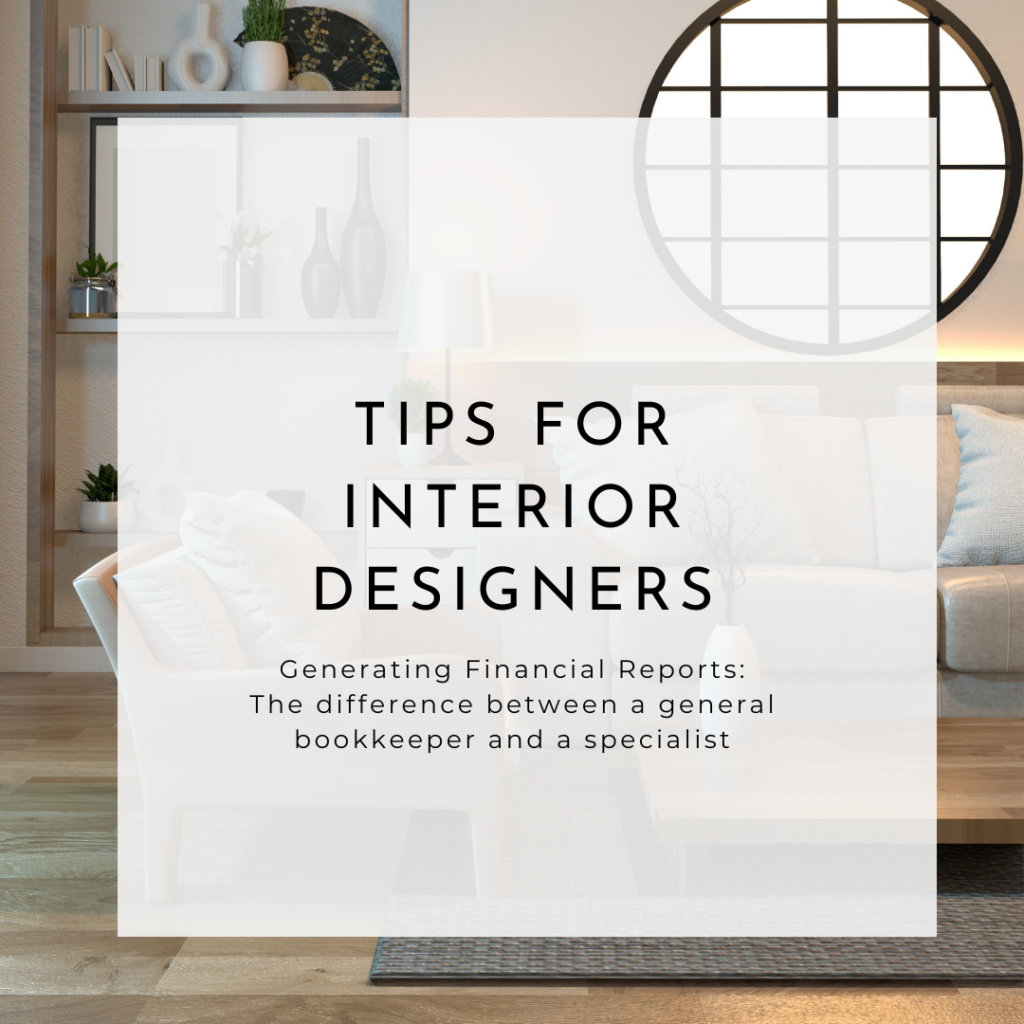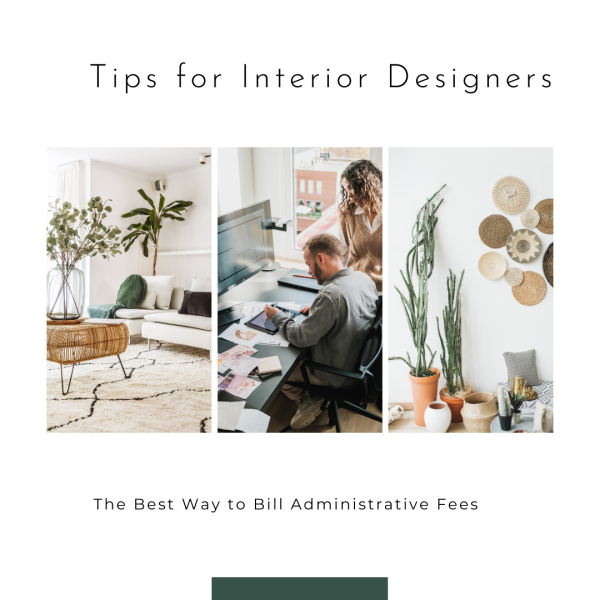Table of Contents
It’s here; we’re finally talking about financial reports for interior designers. To do that, we’re going to first talk about the person who issues those reports to you: your bookkeeper.
When first starting your interior design business, you can use a generalized bookkeeper as a starting point. Funds are low and you have to do what you can to launch your business fully. As you build your business, you need an accounting partner that helps grow your business.
Where I have seen the best results are where interior designers choose to work with an accounting firm that specializes in interior design and growth strategies. Working with a partner that has successfully helped ID business grow and scale their business helps set you up for success. When we add competencies like project base tracking and metrics and sales tax a generalized accounting firm will not cut it if you want to grow your business.
Financial reports for interior designers to grow their business:
- Profit & Loss (PNL) By Project – analysis of what type of projects are most profitable in your business
- Review your income categories against your cost accounts to see where you are losing money and if there are any adjustments that can be made to increase your gross profit margin.
- Cash Position – after all your vendors and liabilities are paid, what is yours to withdraw from the business
- Time profitability report – this helps analyze the profitability of your projects based on the time invested by your team members. We want to look at your profit margins on your design time to determine that you have a large enough markup to generate profits
The key to remember is that if done correctly, an interior design business is very profitable. As an industry standard, your gross profit margins should be between 40-60%. Closer to 60% is always my goal when working with growth-minded ID business owners. I want to help them reach the highest possible growth margin, as we want to use the profits to reinvest in their growth.
Other ways interior design bookkeeping is different from other industries:
There are (of course) several similarities when looking at generalists for your bookkeeping needs, but there are several key ways that a specialist may be able to help you where a generalist can’t. Here are several ways that an accountant who specializes in interior design clients can be a big benefit to you. Yes, while some of these may have some overlap with a generalist, for the most part, these are the areas you’ll want to nail down before you make a decision on bookkeeping.
Financial Reporting for Interior Designers
Growing interior design firms may require more sophisticated financial reporting to provide stakeholders with insights into the business’s performance. This may include creating customized financial statements, key performance indicators (KPIs), and budgeting and forecasting models. An accountant or an accounting firm that is familiar with these KPIs is a must for any firm.
Subcontractors and Suppliers for Interior Designers
Your accountant also has an important role to play in how subcontractors and suppliers form relationships with you. It might not be totally obvious at first, but Interior designers often work with subcontractors and suppliers to provide services and materials for their projects. Managing accounts payable and tracking payments to subcontractors and suppliers is crucial for maintaining good relationships and managing cash flow. Those relationships work best when everyone is paid on time and the correct amount.
Revenue Recognition for interior designers
Revenue recognition can be complex in the interior design industry, as revenue is typically recognized over the duration of the project rather than at the time of sale. Recognizing revenue accurately involves estimating project completion and ensuring that revenue is matched with the corresponding expenses.That means that planning out a project with a bookkeeper who specializes in interior design will have a more accurate representation of revenue recognition than a generalist.
Project-based accounting for interior designers
Interior design projects are typically undertaken on a project basis. Accounting for these projects involves tracking project costs, revenues, and profits individually. This may involve job costing techniques to allocate expenses accurately to each project.
Inventory Management for interior designers
Interior designers may need to manage inventory, including furnishings, materials, and accessories. Inventory management becomes crucial, especially as the business grows and the volume of projects increases.
Cost of Goods Sold (COGS) for interior designers
Unlike service-based businesses, interior designers may have COGS associated with the purchase of goods such as furniture, fabrics, and fixtures. Tracking COGS accurately is essential for determining the gross profit margin on each project.
Client Deposits and Retainers for interior designers
Interior designers often require upfront payments or retainers from clients before starting a project. Managing these client deposits requires careful accounting to ensure compliance with regulations and accurate reporting of liabilities.
Sales tax and reselling goods for interior designers
You will want to make sure you charge the correct sales tax liability especially if you have multi-state filings. Profit margin in reselling goods and project management accurately reflects tax liability and sales tax collected.
Are you feeling like it’s time to change to an interior design accountant?
When your interior design business was just beginning, a general accountant was probably the right fit. They don’t cost too much, and they can fulfill all the basic needs that any business would want as they start. Maybe you weren’t as concerned with specific financial reports for interior designers.
Here’s the thing: Just like people, businesses grow and change. Doing the same thing you did last year could actually be prohibiting your growth. Interior Design is a profitable business when done correctly, but too often we see general accountants miss out on key areas that would’ve helped their clients. If you’re feeling that way, listen to your gut. It might be time to make a change.




